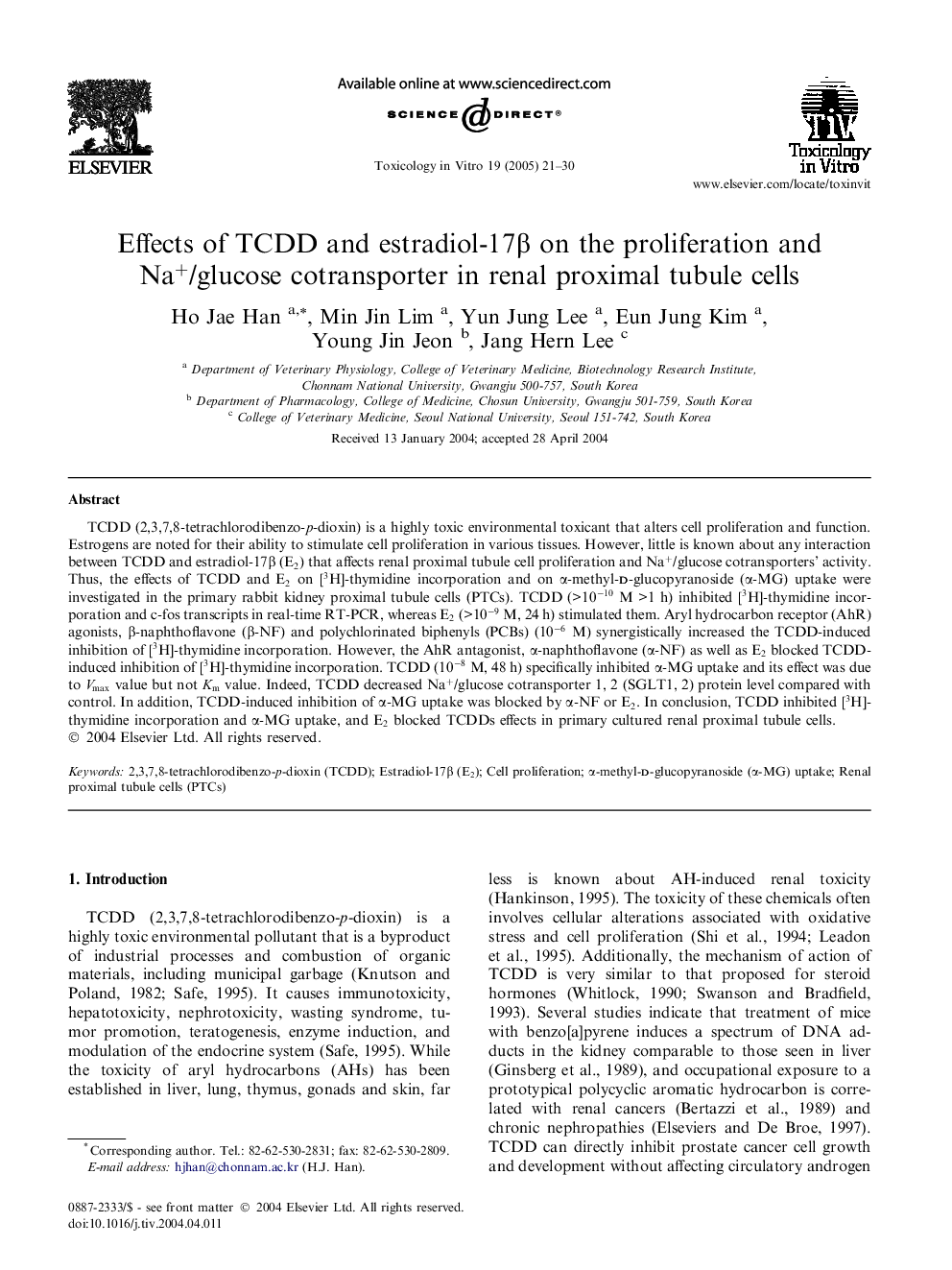| Article ID | Journal | Published Year | Pages | File Type |
|---|---|---|---|---|
| 9038335 | Toxicology in Vitro | 2005 | 10 Pages |
Abstract
TCDD (2,3,7,8-tetrachlorodibenzo-p-dioxin) is a highly toxic environmental toxicant that alters cell proliferation and function. Estrogens are noted for their ability to stimulate cell proliferation in various tissues. However, little is known about any interaction between TCDD and estradiol-17β (E2) that affects renal proximal tubule cell proliferation and Na+/glucose cotransporters' activity. Thus, the effects of TCDD and E2 on [3H]-thymidine incorporation and on α-methyl-d-glucopyranoside (α-MG) uptake were investigated in the primary rabbit kidney proximal tubule cells (PTCs). TCDD (>10â10 M >1 h) inhibited [3H]-thymidine incorporation and c-fos transcripts in real-time RT-PCR, whereas E2 (>10â9 M, 24 h) stimulated them. Aryl hydrocarbon receptor (AhR) agonists, β-naphthoflavone (β-NF) and polychlorinated biphenyls (PCBs) (10â6 M) synergistically increased the TCDD-induced inhibition of [3H]-thymidine incorporation. However, the AhR antagonist, α-naphthoflavone (α-NF) as well as E2 blocked TCDD-induced inhibition of [3H]-thymidine incorporation. TCDD (10â8 M, 48 h) specifically inhibited α-MG uptake and its effect was due to Vmax value but not Km value. Indeed, TCDD decreased Na+/glucose cotransporter 1, 2 (SGLT1, 2) protein level compared with control. In addition, TCDD-induced inhibition of α-MG uptake was blocked by α-NF or E2. In conclusion, TCDD inhibited [3H]-thymidine incorporation and α-MG uptake, and E2 blocked TCDDs effects in primary cultured renal proximal tubule cells.
Related Topics
Life Sciences
Environmental Science
Health, Toxicology and Mutagenesis
Authors
Ho Jae Han, Min Jin Lim, Yun Jung Lee, Eun Jung Kim, Young Jin Jeon, Jang Hern Lee,
